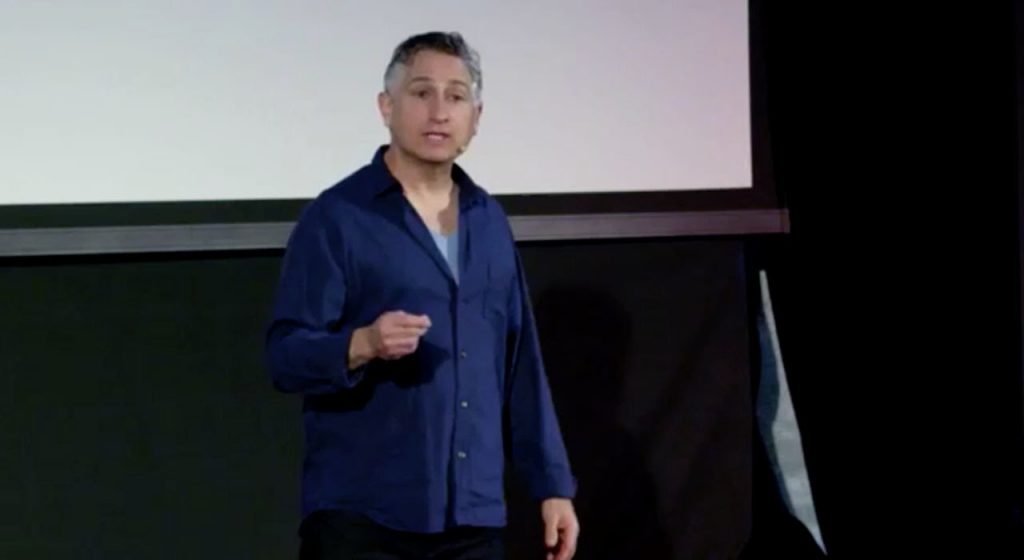How the Evolution of Porn Changed Adolescence

As an adolescent development expert, Dr. Megan Maas explains how pornography is not what it used to be.
When we understand how the evolution of pornography parallels that of the evolution of food, we can more easily communicate to teens how pornography consumption might impact people’s sexual experiences in different ways. Through this historical lens, she invites us to be more critical about the pornography we consume and more present when having sex with a real-life human being. Megan Maas, PhD, is an assistant professor in Human Development & Family Studies at Michigan State University.
Her award-winning research, recognized by the American Psychological Association and funded by the National Institutes of Health, focuses on adolescent sexual development and how internet pornography shapes that development. In addition to publishing in academic journals, she also publishes her work in mass media outlets such as HuffPost, CNN, and Salon. Her talk will feature the history of pornography use in the U.S. and the role it plays in making the sexual experiences of today’s youth so different than the sexual experiences of the past several generations.
The potential psychological effects on adolescents from regularly consuming pornography are worth considering.
Over the past few decades, the pornography industry has undergone significant evolution. The availability of internet access has further facilitated the spread of pornographic content, and as a result, adolescents have become increasingly exposed to sexual material at younger ages. This trend has sparked fierce debates among psychologists, educators, and parents about the potential impact of this evolution on adolescence, particularly regarding their sexual development and attitudes towards sex.
One notable change that has occurred is the sheer volume of pornography available. In previous eras, pornography was primarily distributed in print form, which carried significant limitations in terms of the amount of content available. Nowadays, there are countless sources of pornography available on the internet, with an abundance of options tailored to suit any conceivable taste. With numerous online streaming platforms, the ease with which pornography can be accessed and consumed has increased manifold, making it easier for adolescents to view it. The increase in pornographic content has normalized sex and made it appear ordinary.
As adolescents are in the stage of their lives when their sexual curiosity is at its peak, ready access to pornographic content has raised myriad concerns regarding its effects on their psychology, values and socialisation. Studies suggest that young adults who consume pornography regularly report greater tolerance for risky sexual behavior, reduced empathy for victims of sexual assault and more unrealistic expectations of romantic relationships. This might lead to sexual harassment and abusive sexual acts too. With adolescents spending more time online than ever before, their exposure to pornographic content is more difficult to regulate, especially since many adolescents prefer watching porn compared to finding a partner their age or even connecting with their friends and peers.
Additionally, pornography has the potential to warp an adolescent’s expectations of sex. As they are exposed to more and more sexual content, their understanding of sex and its emotional connections may become distorted, leading to inappropriate and potentially life altering sexual behaviours. This may lead to unrealistic expectations while pursuing physical intimacy, which may lead to sexual frustration and lack of satisfaction that in turn impact mental health.
In conclusion, as pornography has evolved and become more available, the concerns about its effects on adolescents have risen. While it can be argued that it may have some beneficial side-effects like knowledge about sexual health and greater emphasis on sex education, there is no doubt that readily available pornography has the potential to alter an adolescent’s sexual life, possibly in irrevocable ways.
Therefore, it is imperative that parents, educators and psychologists take steps to ensure that adolescents are equipped with the necessary knowledge and tools to navigate the complex sexual landscape they will inevitably encounter. This might include sex-positive education that focuses on more holistic notions of sexual intimacy and sensuality, as well as curbing the uncensored access teens have to directly porn sites.
Moving forward, it is essential that society becomes more appreciative of the long-term psychological impact that pornography has on adolescents and develop more comprehensive preventive measures to curb the negative aspects of watching pornography.










How craving attention makes you less creative | Joseph Gordon-Levitt
How to Burn the Most Fat
37 AMAZING BEAUTY TIPS FOR GIRLS
A simple way to break a bad habit | Judson Brewer
Healthy 5 minute Breakfast Ideas for busy people / kid friendly